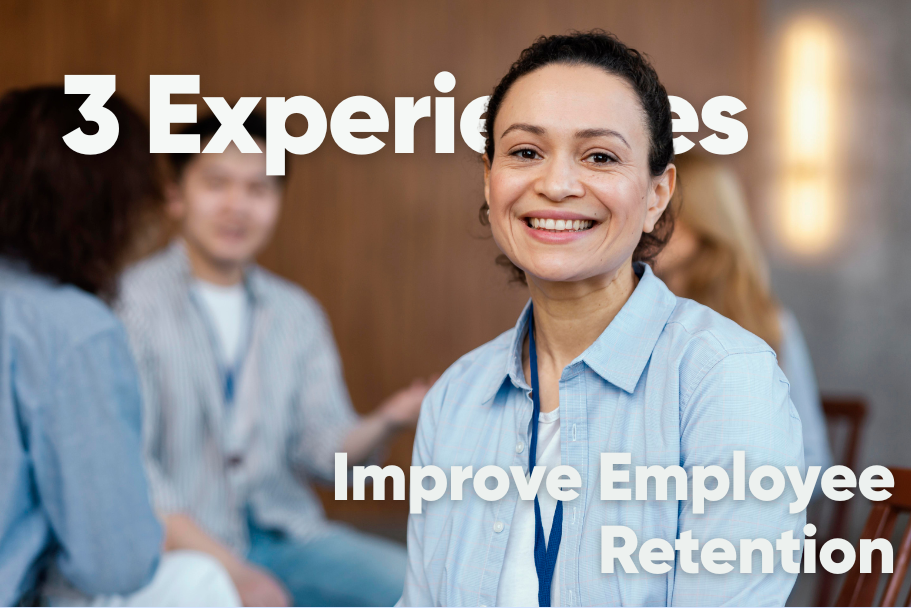
Best Workplaces, Employee well-being, Inclusion, Equity, Retention, Remote & Hybrid Work Culture
The best companies make mental wellness a priority. And Great Place To Work research has long proven the essential connection between employee well-being and key business goals like employee retention and performance. Employees who experience well-being are three times more likely to stay with their employer and three times more likely to recommend their employer to others. While well-being is multifaceted, encouraging mental wellness and providing emotional support is a key driver of overall well-being at work.
At the Best Workplaces™ for Mental Wellness this connection and linking of mental wellness and support for their employees is acknowledged. It is this awareness, that leads them to provide a wide range of workplace practices to promote mental health. The result is that their people feel safe and supported and able to bring their best selves to work knowing their employer has their best interests in mind.
For employees at the Best Workplaces™ for Mental Wellness, on average:

Believe their workplace is psychologically and emotionally healthy

Trust they can be themselves at work

Feel people at work care about them
Key workplace practices to promote mental wellness come from simply putting people first. Helping each other, supporting each other and caring about each other meaningfully and authentically. Here are some things you can start providing to promote mental wellness in your organization.
Mental and Emotional Support
This relates to the feelings and experiences that build and sustain positive mental energy. When employees have good mental and emotional support, they are more likely to have what psychologists call “positive attribution” or “optimistic attribution” style. Positive attribution can build optimism, energy, hope, and confidence in people, which builds what is known as psychological capital. Positive mental energy can greatly influence an individual’s outlook and perception of their surroundings or workplace. An individual who experiences strong mental and emotional support can better manage workplace stress and anxiety.
- Value patience and compassion and encourage people to treat one another kindly. Start by giving people the benefit of the doubt and assume that everyone is acting from a place of good intentions, reward behaviour and interactions that demonstrate these qualities.
- Check in with people regularly – listen and allow people to express how they are feeling without judgement. Provide training for leaders to help them develop this skill for themselves and within their team.
- Consider using short pulse surveys to stay in touch with the general mood of the organization allowing you to take action quickly as required. These surveys also give a voice to those who aren’t comfortable speaking up.
Personal Support
People who are personally supported feel safe and trusted. Working with others – especially managers – who create a safe, trusting, and respectful employee experience contributes to mental wellness. High levels of personal support are evidenced in workplaces that provide flexibility and job control, as well as the resources to accomplish goals. Managers have a critical role to play and can demonstrate support through employee development and career growth opportunities as these send a message that people are valued.
- Promote flexibility using a wide lens to help ensure employees in all types of work situations have access to the time off they need to balance their busy lives. Work from home, hybrid work, flexible shift selection, non-traditional work hours, flex days, extra time off… think outside the box for options that fit your work environment.
- Give people control over their jobs with purposeful work, autonomous decision making, and adequate resources. The best workplaces are those that trust their people to manage their time and deliver results.
- Provide development opportunities that align with personal career goals and help employees understand the different ways they can progress their career within the organization through upward, lateral and geographical movements and any combination thereof.
Meaningful Connections
Supportive social relationships are associated with lower stress levels. Having meaningful and caring relationships with co-workers and leaders is an integral part of the work experience, especially when they support personal needs. When employees have friends at the office, they’re more engaged, more productive, and more likely to stay with the organization.
- Start with a warm onboarding system so new employees feel welcome when joining your organization. Use buddies, mentors and other new-employee ambassador programs to make introductions and familiarize people with the workplace.
- Pay attention to connections with remote and hybrid workers. Peer-to-peer communications and recognition are great ways to promote relationships between employees who don’t work together.
- Use collaborative spaces to bring people together. While individual desks still have their place, increase space for socializing with communal tables, focus pods, and breakout rooms to boost connection and camaraderie.
Equity and Inclusion
An environment of equity and inclusion is also necessary to create psychological safety and build mental wellness. When people feel they belong, are seen as individuals, and feel they will be treated fairly this gives them the mental space necessary to do great work without worrying about disparities they may have experienced in other areas of their life. Plus, we know from our research that companies that close experience gaps for overlooked workers perform better in the marketplace.
- Build belonging by leveraging Employee Resource Groups (ERGs) to bring people together who share common experiences and challenges. These connections can be used to foster a sense of belonging throughout the organization.
- Recognize that different parts of your employee population may face different mental wellness challenges. Use ERGs to identify triggers and source ideas for offering support and relief. And bring together people from various parts of the company to share experiences, challenges and discuss solutions.
- Adopt a needs-based benefit strategy, offering perks and benefits that your diverse workforce wants and will appreciate. As part of this, audit your current programs and see where you may need to make changes or additions.
There is a growing urgency to address workplace practices to promote mental health. The Best Workplaces™ for Mental Wellness are already prioritizing this for their people. By focusing on one or more of these areas of mental wellness, your company can build toward a healthier workplace overall – one that is supportive, that builds connections between people and that honours the individual differences that make us all capable of great things.
Does your company create a great environment for mental wellness, promote inclusivity or have a great workplace culture? Nominate your workplace for one of our Best Workplaces™ awards.






